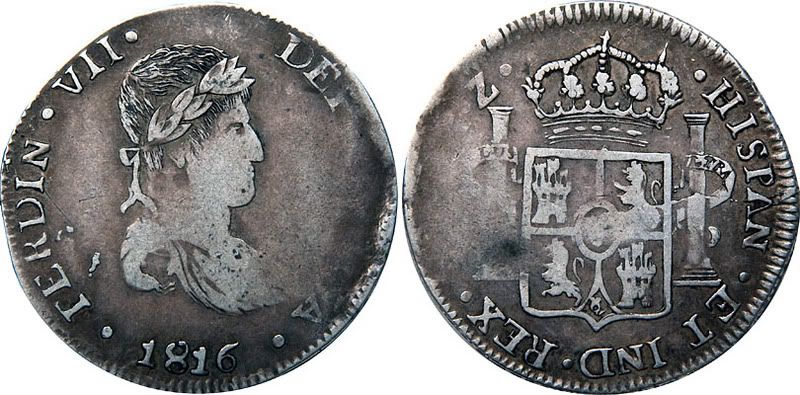Options
NEWP: Addition to my primary collection.
 TwoKopeiki
Posts: 9,855 ✭✭✭✭✭
TwoKopeiki
Posts: 9,855 ✭✭✭✭✭
Another piece to add to my War of Independence collection. This will be the 4th 8 Reales piece from Durango Provisional mint.
Seller's pics look blurry, but after looking at all of his other ones - it looks like all of them are out of focus:


Here's the 1816 I already have, which is a different die pairing:

~Roman
Seller's pics look blurry, but after looking at all of his other ones - it looks like all of them are out of focus:


Here's the 1816 I already have, which is a different die pairing:

~Roman
0
Comments
I give away money. I collect money.
I don’t love money . I do love the Lord God.
Doggedly collecting coins of the Central American Republic.
Visit the Society of US Pattern Collectors at USPatterns.com.
BTW, the coin is wildly overweight.
Ferdinand VII 8 Reales Durango, KM-110.1.Similar to Calico type 108f, number 420. 39.2 grams, which is 12 grams more than usual for this War of Independence issue. Although crudely produced, this coin displays a carefully engrailed edge. We can find no mention of a Durango 8 Reales struck to this weight, nor do we know why it would have been produced, except to say its mystery reflects the turbulent times in which it was minted. Crude VF but with no real wear evident. Struck from 1811-1814, this coin lacks the date and mint, but the portrait of the King and the arms on the reverse are quite bold. Only the DE of DEI is legible on the obverse, while a D (either of IND or Durango) is clear in the reverse legend. Very rare in any grade and a true numismatic challenge for the specialized collector.
Doggedly collecting coins of the Central American Republic.
Visit the Society of US Pattern Collectors at USPatterns.com.
I have a "fatty", as well (27.28g), but nothing coming close to the weight of yours.
8 Reales Madness Collection
<< <i>It likely is a privately produced "necessity coinage" made of more than 8Rs in metal value so that it would be accepted in commerce. There are many instances where fraud was not the primary motivation. Silver in bulk was hard to use in commerce but even a poorly made coin was better. >>
Fascinating piece, Andy. Noone I've spoken with so far have seen anything with either that die characteristics, or that weight. The above quote came the closest to explaining the reason for its' existence. Also, I wonder if the shield design led Heritage to attribute this piece to Durango.
Specific gravity testing would support the abovementioned theory if it checks out at .900 or higher.
~Roman
8 Reales Madness Collection